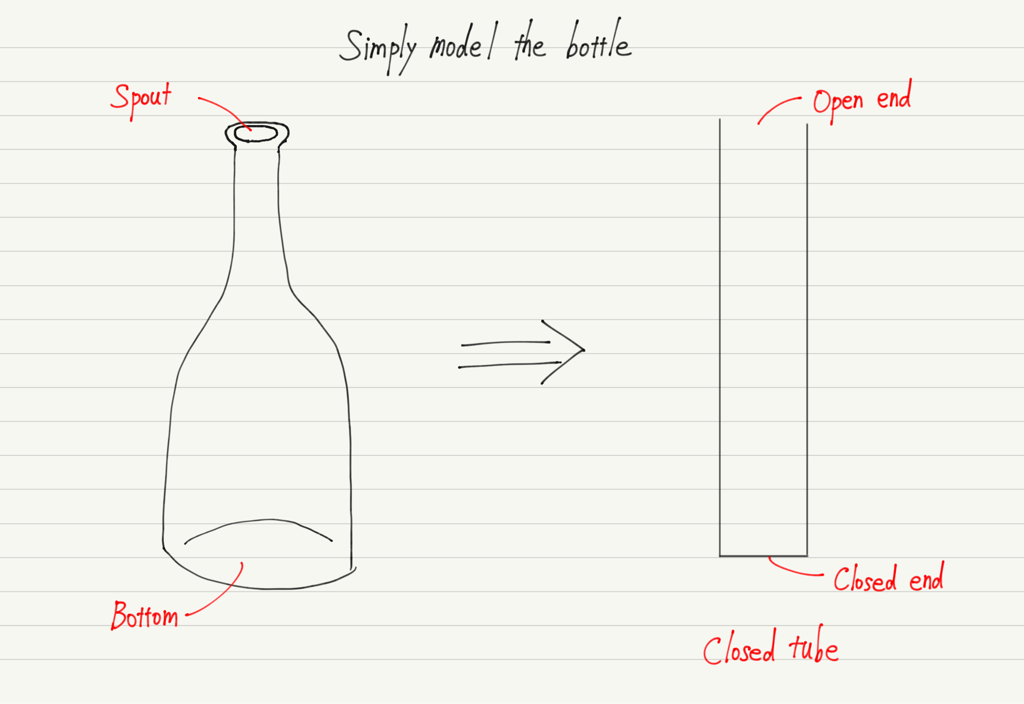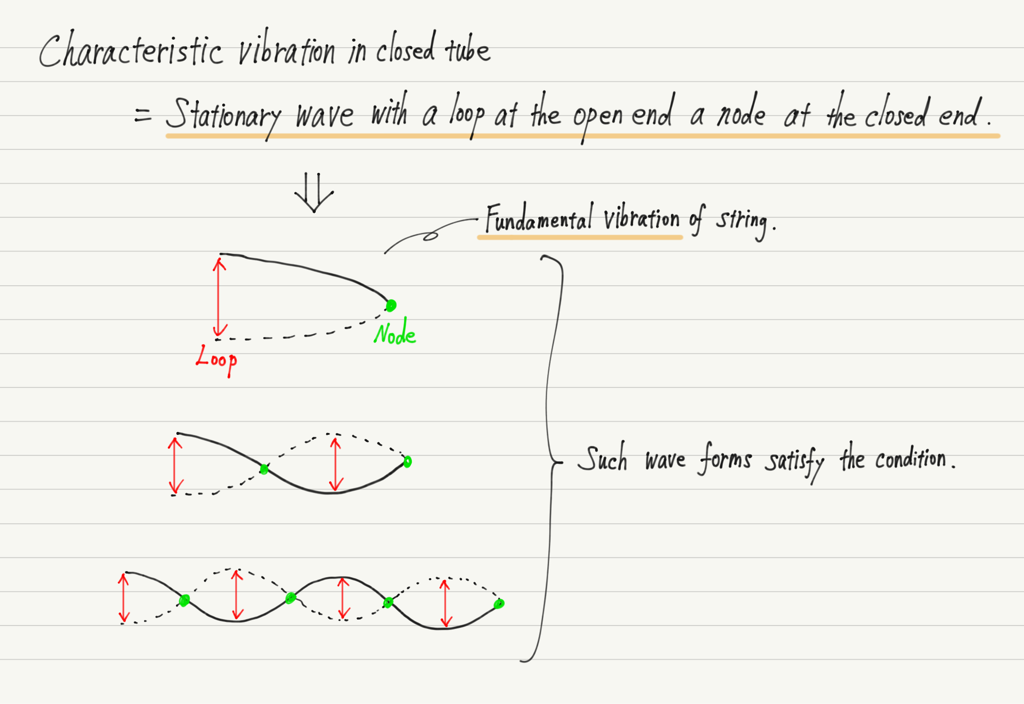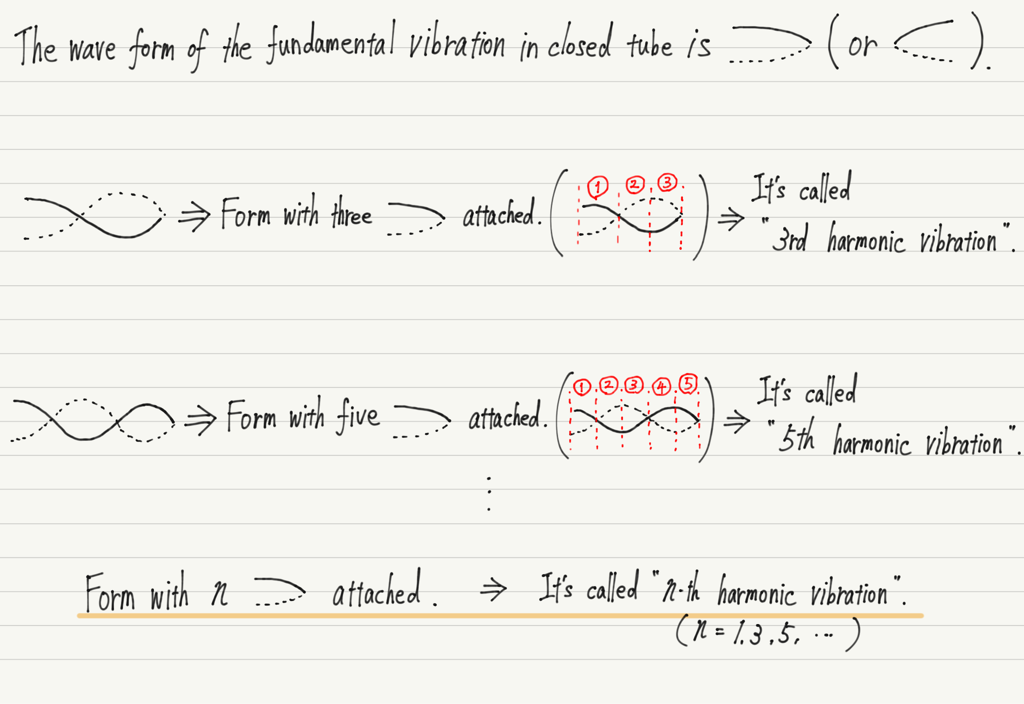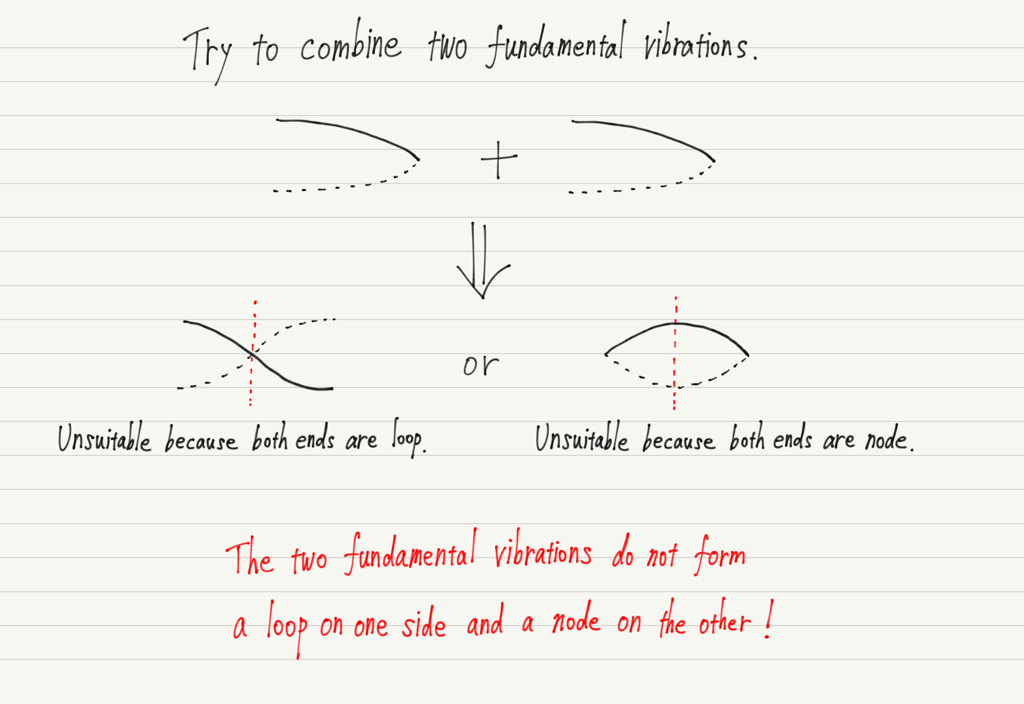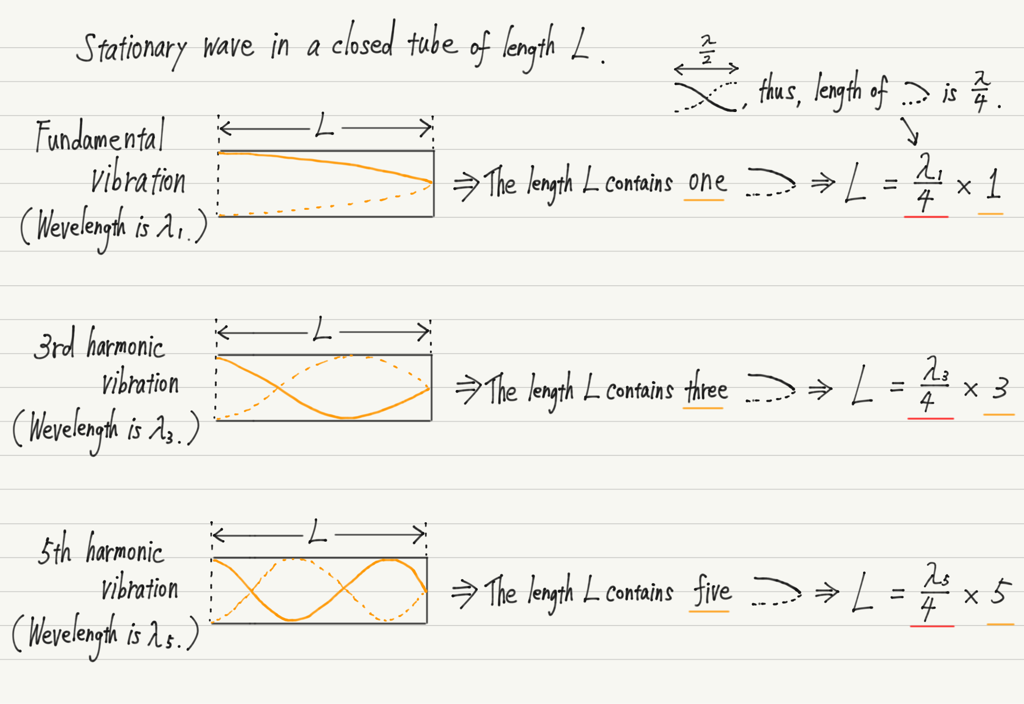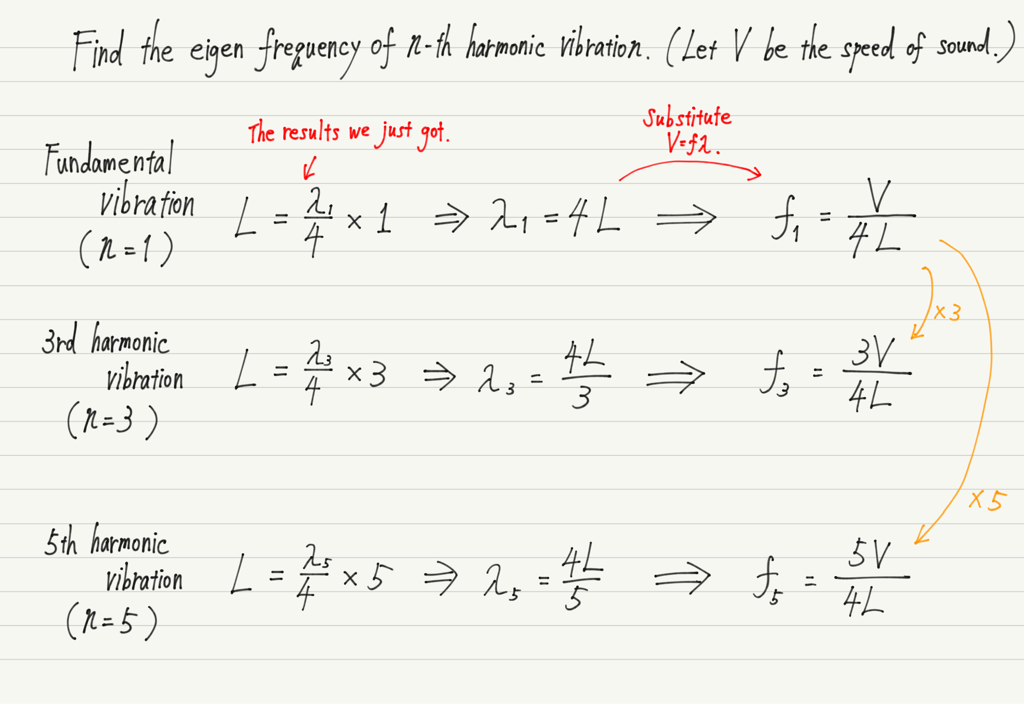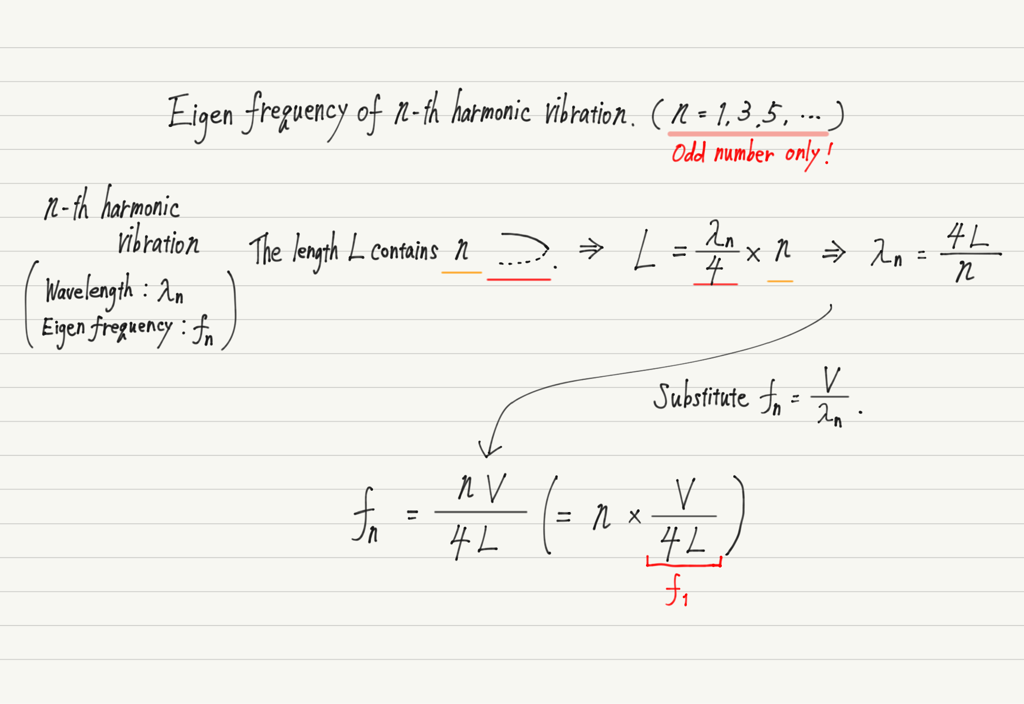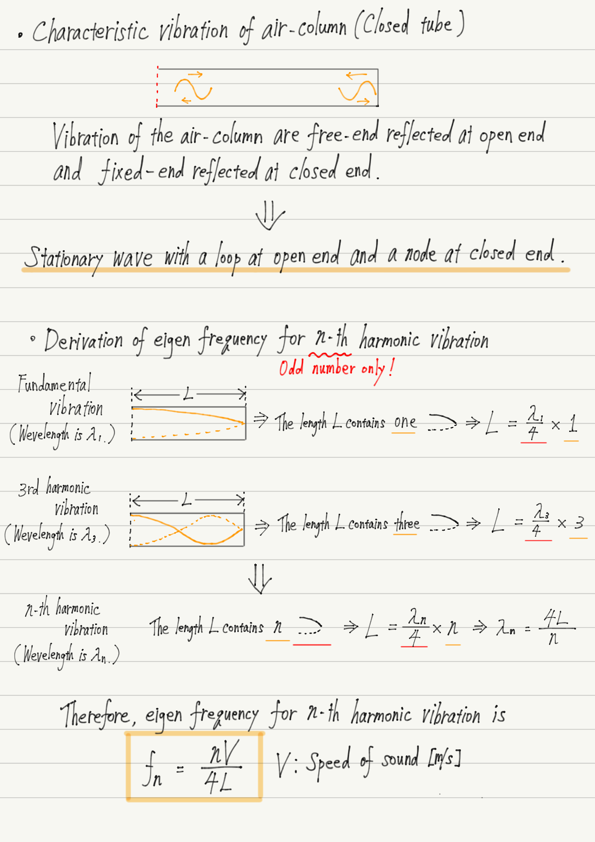Characteristic Vibration of Air-Column(Closed Tube)
If you blow into the spout of a bottle, the air inside may vibrate and make a loud noise.
Maybe you’ve done it once in your life, right?
Unlike the open tubes we studied last time, the bottles have bottom.
A tube with one side open and the other closed is called closed tube.
In this lecture, we will discuss the characteristic vibrations of an air-column in a closed tube!
Types of characteristic vibrations in closed tube
Vibrations sent in through the open mouth are reflected back at the bottom, so the incident and reflected waves overlap, creating a stationary wave in the closed tube.
The vibrations of the air-column were free-end reflections at the open end, but fixed-end reflections at the closed end.
Since the stationary wave is at the node at the free-end and at the loop at the fixed-end, the characteristic vibration of an air-column in a closed tube is as follows.
In string, both sides are nodes; in open tube, both sides are loops; and in closed tube, one side is a loop and the other a node.
All patterns are now available.
As before, n-th harmonic vibrations also exist in the case of closed tubes.
I would say the same as for string and open tube… but look closer!
After the fundamental vibration comes the 3rd harmonic vibration.
Where did the 2nd harmonic vibration go?
Reason why only odd harmonics are sounded
The reason for the disappearance of the 2nd harmonic vibration is simple: the 2nd haronic vibration was a stationary wave that had two fundamental vibration forms attached to it.
However, in the case of a closed tube, no matter how you combine the two fundamental vibrations, you cannot create a stationary wave with a loop on one side and a node on the other!
Similarly, we cannot create 4th or 6th harmonic vibrations and conclude that only odd harmonics can exist in a closed tube.
Note that this is a property that was not present in string and open tube.
Consideration of characteristic vibrations in closed tube
From this point forward, we will again calculate the eigen frequencies.
It is exactly the same as for string and open tube, except that there are only odd multiples and that the length of the fundamental vibration is a quarter of the wavelength.
We also find the n-th harmonic vibration.
The form of the equation is slightly different, but the process of finding the eigen frequency is the same for string, open tube, and closed tube!
Summary of this lecture
Next Time
This concludes the field of waves in Basic Physics.
After this, we will go into Advanced Physics.
It is tough if you do not understand the content of Basic Physics.
Please review what you have learned so far before proceeding to the next section.
